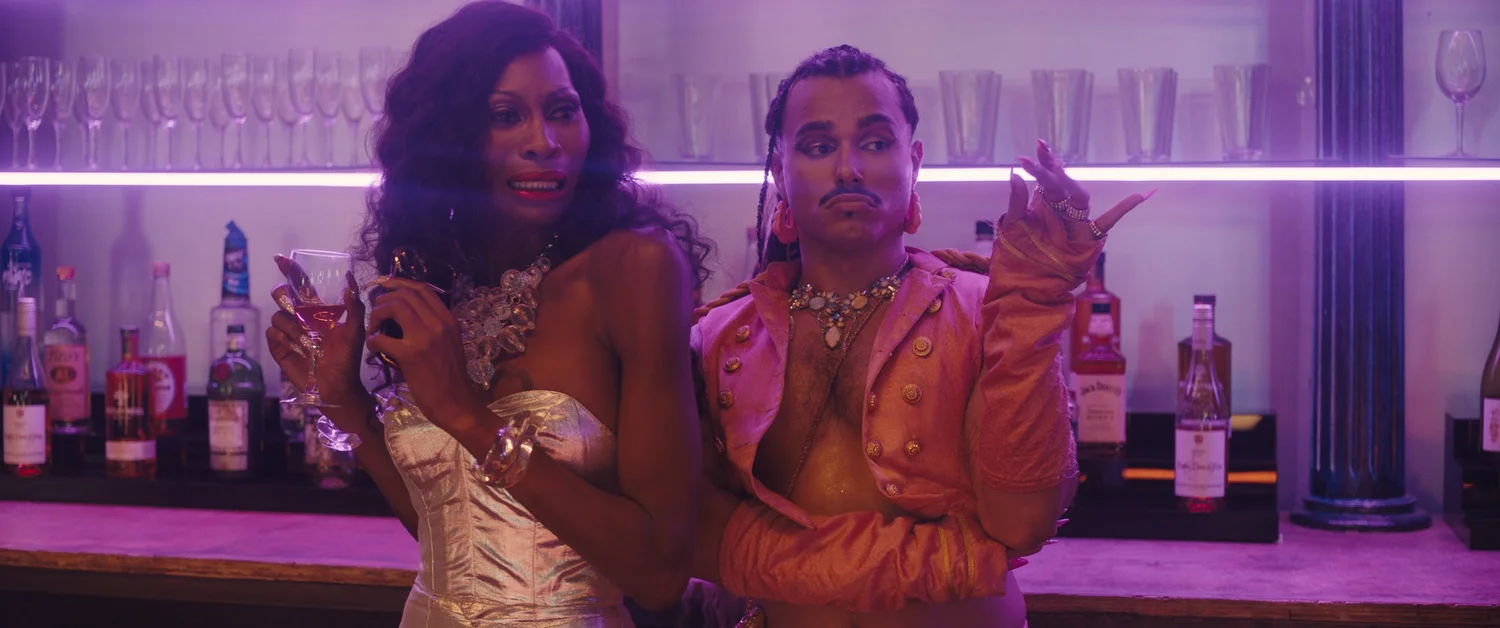Inspired by Romero’s time as a DJ in the gay nightlife scene of New York City, Queens of the Dead embraces the chaos of putting on a show. After a cold open featuring a hookup gone fatally wrong, Romero drops us into a montage of two very different afternoons. House before a massive warehouse party in Brooklyn, drag performer Ginsey (Nina West) is rehearsing her number with her dancers, including the attempted scene-stealing Nico (an actual scene-stealing Tomás Matos). Meanwhile, ex-performer Sam (Jaquel Spivey) distributes meds and jello at a local hospital, having hung up his heels for a set of scrubs. Things are falling apart at both locations. At the club, stage manager Kelsey (Jack Haven) is losing performers left and right. Producer Dre (Katy O’Brian) is just doing her best to troubleshoot while managing her oafish brother-in-law, who can fix a toilet but can’t get his head around they/them pronouns. At the hospital, Sam’s coworker Lizzy (Riki Lindhome), who just happens to be Dre’s wife, encourages him to resurrect his drag persona, Samoncé, and save the party. As the undead begin to make their way across Brooklyn, a shelter-in-place order is enacted by the mayor, played with sleazy glee by Pittsburgh legend and frequent George Romero collaborator Tom Savini. The cast gathers at the club and hunkers down, setting the stage for a classic zombie movie scenario: a bunch of people stuck in one place, fighting each other as much as the monsters.
Queens of the Dead benefits from Romero’s assured eye for a great shot or a shocking kill. Her club scenes are frenetic and fun, dance beats pulsing as zombies rip into sequin-covered flesh. Even the zombies themselves are a great bit of design, glittery green and sickening. The performances are mostly great, with Katy O’Brian and Jaquel Spivey especially excelling at carrying the emotional moments amid the humor and the gore. Romero and Judge’s script is tight and funny, giving each character, including a number of cameos, their moment to shine.
Zombie movies, largely thanks to the tone set by George Romero, have often featured social commentary. Night of the Living Dead (1968) critiqued the American military and the racism of the 1960s. Its sequel, Dawn of the Dead (1978), lambasted consumerism, trapping its victims in the (soon to be demolished) Monroeville Mall. In a similar spirit, Tina Romero aims at a newer kind of consumption: social media. Influencers are chomped mid-post, turning into mindless ghouls still clutching their phones. Hashtags like #decapitate and #headshot gain traction as people try to crowdsource solutions to the outbreak. Romero also has plenty to say about the queer nightlife scene’s reliance on brand deals, alcohol, and drugs to keep the party going and funded. She even has time for some jabs at terrible politicians who don’t really give a shit about the people they serve. Romero knows she can’t outrun her father’s lurching legacy, and she’s too smart to try. Instead, she embraces it with references, including an especially fun “They’re coming to get you, Barbara” from Matos. She takes familiar tropes of the genre, many invented by her father, and finds new ways to both honor and subvert them.
“This is NOT a George Romero movie,” Savini’s mayor insists as he addresses the city. He’s right; it’s a Tina Romero movie, and it’s a bloody, nasty, queer delight.

